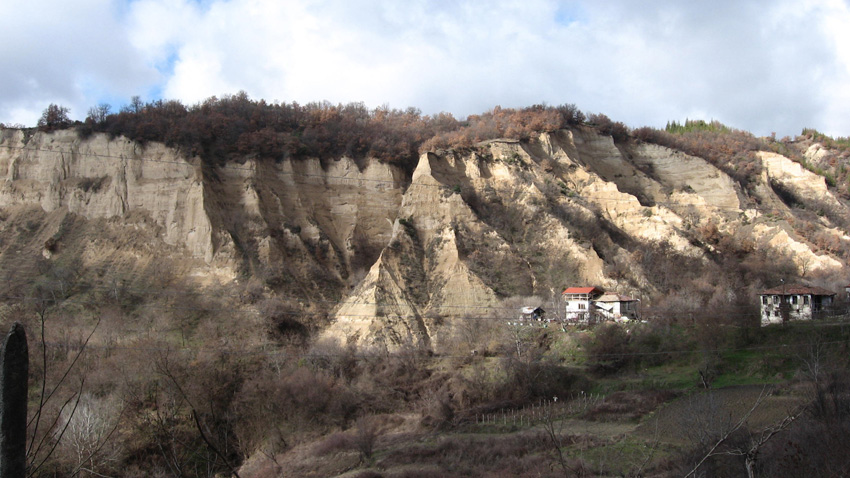
The southern segment of Mount Pirin is known for its bizarre shapes and relief, especially in the region of the pyramids of Melnik, some 180 kms. from Sofia. The pyramids were formed of grey-white sands and clay layers, and in 1960 they were declared a natural monument.
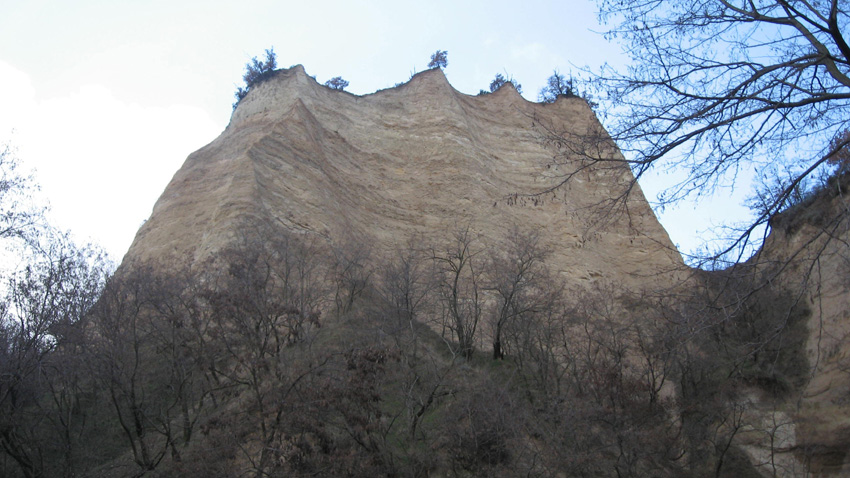
Known as the pyramids of Melnik, the rock formations near the town of the same name are continually changing shape as a result of the combined erosive effect of water, wind, heat and cold. There are some outlandish shapes that can be seen here – cones that are 7-8 metres high, castles, cups and different “figures” that people with a vivid imagination liken to all kinds of different things. There are classical pyramids, formed by pillar-shaped fragments of rock that are broader at the base. The “sculpting” of these shapes is due to the layers of clay on the surface. As the rain wets it and the sun bakes it, a kind of natural coating is formed that is 1-2 cms. thick and serves as a protective cover. Some of the pyramids are up 100 m. high with all kinds of plants growing from the top, plants that are greatly influenced by the Mediterranean climate.
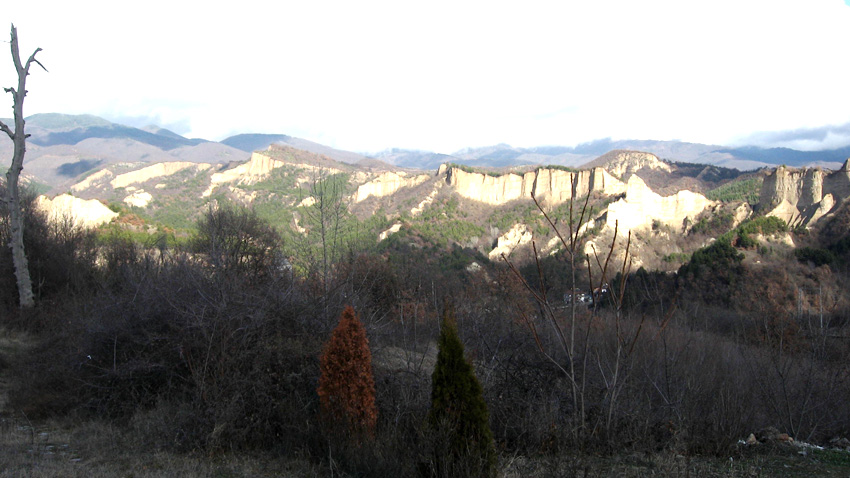
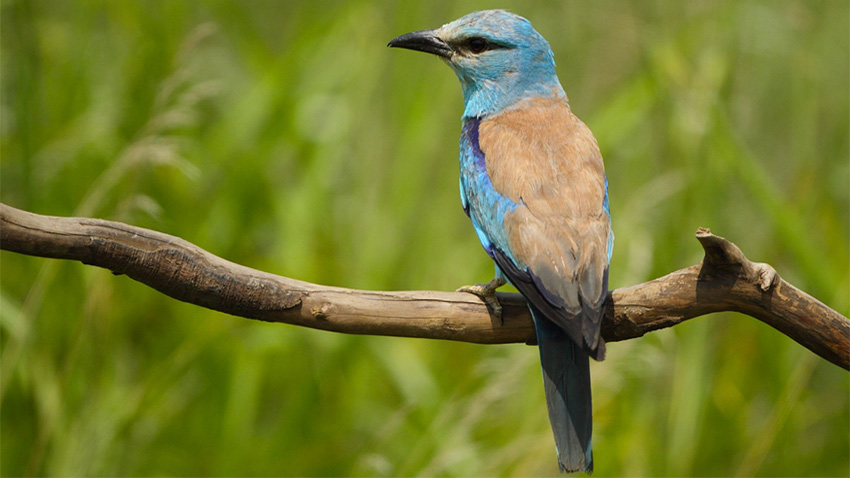 According to data of the Bulgarian Bird Protection Society, this is a place that is suitable as a habitat for 32 species on the list of the Biological Diversity Act, requiring special protection. That is why the Melnik pyramids are of world significance as a representative area of the Mediterranean biogeographical zone. According to ornithologists, this is a region that is very important to birds because of the kind of vegetation here – pastures, shrubbery, woodland – which is under the strong influence of the Mediterranean climate and is to be found nowhere else in Bulgaria. This combination of different natural assets defines the diversity of species that is typical of the Mediterranean biogeographical zone, such as, for example the olive tree warbler (Hippolais olivetorum). Habitats typical of these species are pastures with shrubbery. The use of traditional vine growing methods creates favourable conditions for different species to nest there – like the ortolan bunting (Emberiza hortulana) and the tawny pipit (Anthus campestris). There is one bird to be found here of extraordinary beauty – the European roller (Coracias garrulus) which inhabits the southern part of Europe (see the rest of the birds in the gallery below).
According to data of the Bulgarian Bird Protection Society, this is a place that is suitable as a habitat for 32 species on the list of the Biological Diversity Act, requiring special protection. That is why the Melnik pyramids are of world significance as a representative area of the Mediterranean biogeographical zone. According to ornithologists, this is a region that is very important to birds because of the kind of vegetation here – pastures, shrubbery, woodland – which is under the strong influence of the Mediterranean climate and is to be found nowhere else in Bulgaria. This combination of different natural assets defines the diversity of species that is typical of the Mediterranean biogeographical zone, such as, for example the olive tree warbler (Hippolais olivetorum). Habitats typical of these species are pastures with shrubbery. The use of traditional vine growing methods creates favourable conditions for different species to nest there – like the ortolan bunting (Emberiza hortulana) and the tawny pipit (Anthus campestris). There is one bird to be found here of extraordinary beauty – the European roller (Coracias garrulus) which inhabits the southern part of Europe (see the rest of the birds in the gallery below).
 There are numerous birds of prey here, many of which nest in the forests of the southern portion of Mount Pirin using the meadows and the pastures as hunting grounds. That is why it is so important to protect the land from chemicals or other kinds of aggressive practices that would destroy the food supply of the songbirds for good. For example, stockbreeding and vine growing are a natural way to sustain habitats, while animal grazing keeps meadows from being overgrown with weeds. More and more people have been turning to natural and pure products though they may be more expensive. That is why local people from the region of the Melnik pyramids want to keep their livelihoods unchanged, as practiced by their ancestors. They are the people the Natura 2000 network offers additional options to, under environmental development and rural development programmes. Unfortunately, few are able to fit into their frameworks and meet the many European requirements, not because they do not meet the criteria, but because of all the red tape. That is why many of the ordinary farmers who have gone down that road once never apply a second time – that is the reason why we absorb no more than 30 percent of the funding.
There are numerous birds of prey here, many of which nest in the forests of the southern portion of Mount Pirin using the meadows and the pastures as hunting grounds. That is why it is so important to protect the land from chemicals or other kinds of aggressive practices that would destroy the food supply of the songbirds for good. For example, stockbreeding and vine growing are a natural way to sustain habitats, while animal grazing keeps meadows from being overgrown with weeds. More and more people have been turning to natural and pure products though they may be more expensive. That is why local people from the region of the Melnik pyramids want to keep their livelihoods unchanged, as practiced by their ancestors. They are the people the Natura 2000 network offers additional options to, under environmental development and rural development programmes. Unfortunately, few are able to fit into their frameworks and meet the many European requirements, not because they do not meet the criteria, but because of all the red tape. That is why many of the ordinary farmers who have gone down that road once never apply a second time – that is the reason why we absorb no more than 30 percent of the funding.
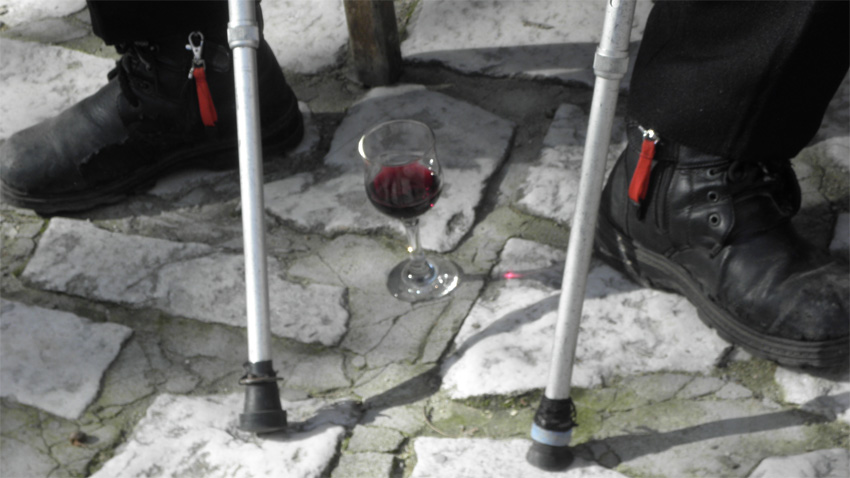
But the hope remains that people living in these parts will not suddenly choose to sell their property to businessmen with lots of money who will then decide to turn these wonders of nature into…golf courses.
English version: Milena Daynova
Photos: Darina Grigorova, BGNES and bg.wikipedia.orgVeliko Tarnovo is the town with the biggest number of cultural and historical landmarks in Bulgaria. Every Bulgarian feels a sense of pride upon setting foot in the medieval Bulgarian capital while foreigners are fascinated by its architecture,..
Bansko has been recognized as one of the most desired destinations during the World Travel Market London. The resort town has entered the top 10 of Lonely Planet’s ranking "Best in Travel 2025". "This is another well-deserved recognition for our..
Caretaker Minister of Tourism Evtim Miloshev held a series of high-level meetings with the tourism ministers of Saudi Arabia, Qatar, Bahrain, and the Secretary-General of Kuwait’s National Council of Culture, Arts and Letters during the World..
A country at the centre of ancient civilisations, whose historic sites sit amongst world-ranked Black Sea coastlines and snow-capped World Cup ski..
Bulgaria is presenting its own stand at the autumn international tourism fair in Bucharest, which is taking place from 21 to 24 November . Visitors to..

+359 2 9336 661
